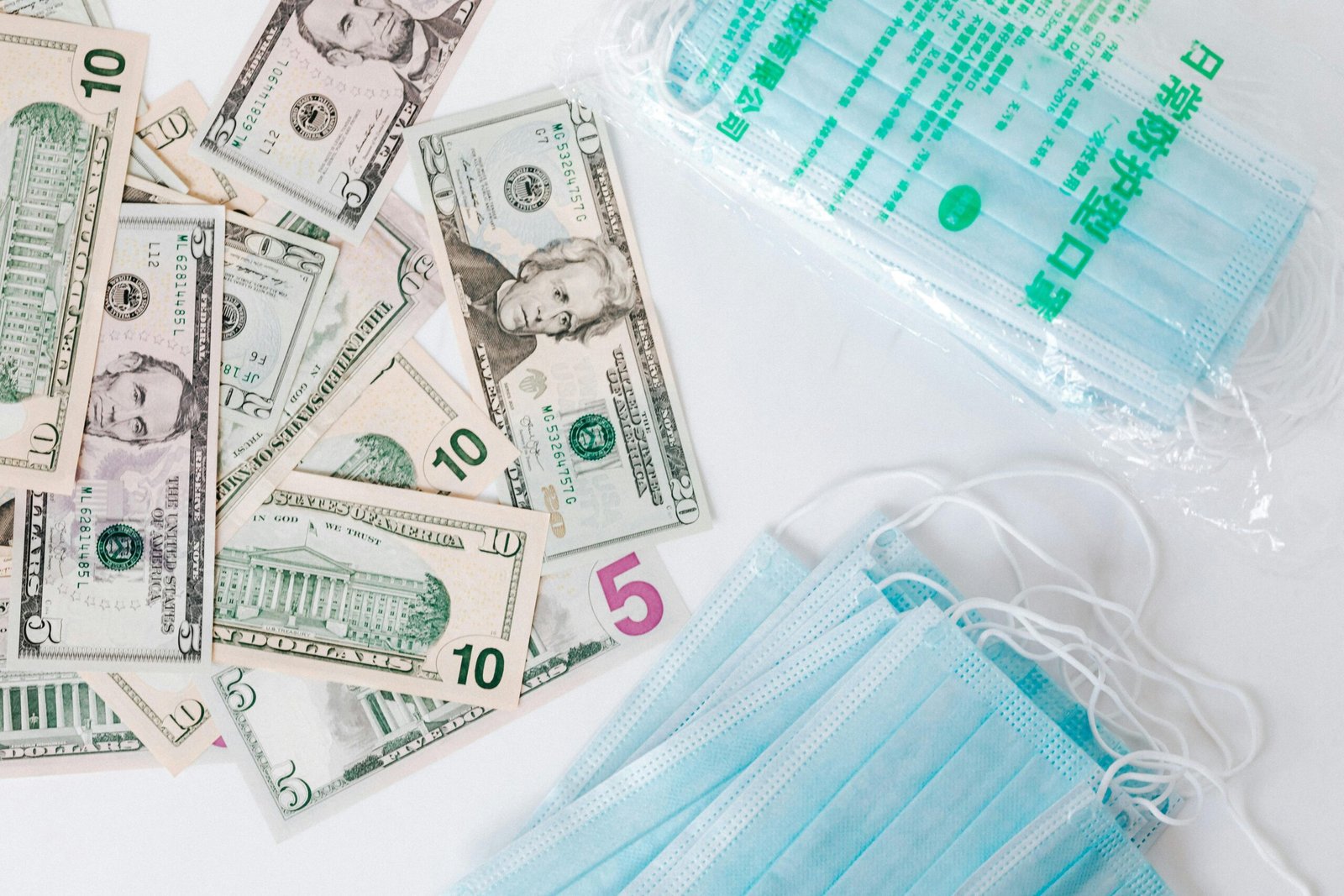The economic impacts of foodborne illness are a hidden crisis that silently drains businesses and healthcare systems.
What appears to be a simple case of food poisoning often escalates into a complex web of financial repercussions.
This post will delve into the staggering costs associated with foodborne illnesses, exploring how they affect individuals, businesses, and the economy as a whole.
From direct medical expenses to the intangible losses of productivity and consumer trust, the financial burden is immense.
By understanding the true cost of foodborne illness, we can appreciate the critical importance of food safety and the steps necessary to prevent these costly outbreaks.
The Hidden Costs of Foodborne Illness

Foodborne illness isn’t just a health crisis; it’s a financial catastrophe lurking in plain sight.
What many business owners fail to realize is that a single outbreak can inflict wounds far deeper than a damaged reputation.
Every year, millions of people fall victim to these illnesses, resulting in a staggering economic toll.
Let’s peel back the layers and reveal the staggering economic impact of foodborne illness.
The CDC estimates that foodborne diseases cause approximately 48 million illnesses, 128,000 hospitalizations, and 3,000 deaths in the United States each year.
These illnesses come with a hefty price tag, with costs associated with medical care, lost wages, and productivity losses reaching into the billions of dollars annually.
But the costs don’t stop there.
Let’s dive into the specific illnesses that hit businesses the hardest:
Here, we are talking about the big 6 foodborne illnesses.

Salmonella:
This bacterium is a notorious culprit, causing an estimated 1.35 million illnesses and 420 deaths annually.
The economic burden of Salmonella is estimated to be in the billions of dollars.
While specific figures can vary, a study by the CDC estimated the average cost of a Salmonella outbreak to be $2.7 million.
E. coli:
This dangerous strain of bacteria can lead to severe illness and even death.
Outbreaks can result in massive product recalls, loss of consumer trust, and legal battles, costing businesses millions.
The costs of E. coli outbreaks can vary widely depending on factors such as the size of the outbreak, the severity of illnesses, and legal settlements.
However, these costs are not uncommon and can reach tens of millions of dollars.
Listeria:
Particularly harmful to pregnant women, the elderly, and immunocompromised individuals, Listeria can cause severe infections and fatalities.
Outbreaks can devastate food manufacturers and retailers.
An example is what happened in Michigan 2024, a Listeria outbreak killed 9 people and caused more than 50 hospitalizations.
Due to the severe consequences of Listeria infections, outbreaks can result in substantial economic losses for affected businesses.
We have prepared a blog post in which we are discussing how to avoid listeria infection and save your community.
Norovirus:
This highly contagious virus is a leading cause of foodborne illness outbreaks.
It can lead to business closures, loss of revenue, and damage to reputation.
Studies have shown that the average cost per outbreak can range from hundreds of thousands to millions of dollars.
Campylobacter:
Another common culprit, Campylobacter causes diarrhea, abdominal cramps, and fever.
Outbreaks can result in significant economic losses for the food industry.
The direct medical costs of Campylobacter illness can vary, but a study in the UK estimated the average cost to be around £100 per case.
Staphylococcus aureus:
This bacteria can cause food poisoning with symptoms like nausea, vomiting, and diarrhea.
While often less severe than other pathogens, it can still lead to business disruptions and financial losses.
The Ripple Effect of foodborne illness.
Foodborne illness doesn’t just affect the individuals who become sick.
It has far-reaching consequences for businesses of all sizes. Here’s how:
Direct Costs:
These are the most obvious expenses, including medical care, lost wages, and product recalls.
Indirect Costs:
These hidden costs can be even more devastating, such as damage to reputation, loss of customers, legal fees, and increased insurance premiums.
Imagine foodborne illness as an iceberg.
The part visible above the water is the direct cost – the immediate financial outlay.

But the much larger, hidden part beneath the surface is the indirect cost – the long-term consequences that can cripple a business.
Direct and indirect costs for foodborne illness
Direct Costs:
Medical expenses: Costs incurred by individuals for treatment, hospitalization, and medication.
Lost wages: Income lost by individuals unable to work due to illness.
Product recalls: The expense of removing contaminated products from the market.
Disposal costs: The cost of disposing of contaminated food and equipment.
Indirect Costs:
Damage to reputation: Negative publicity can erode consumer trust and lead to a decline in sales.
Loss of customers: Customers may avoid a business associated with a foodborne illness outbreak.
Legal fees: Costs associated with defending against lawsuits.
Increased insurance premiums: Higher premiums due to a history of foodborne illness claims.
Productivity loss: Reduced productivity for businesses due to sick employees or disruption of operations.
For example,

Direct cost

Indirect Cost
To understand how bad can be the economic impacts of foodborne illness:
A restaurant experiencing a Salmonella outbreak might face direct costs such as medical expenses for sick customers, lost sales due to temporary closure, and the cost of cleaning and disinfecting the premises.
However, the indirect costs, such as damage to the restaurant’s reputation, loss of regular customers, and potential legal fees, could far exceed the direct costs.
The Power of Prevention
Effective food safety practices are the cornerstone of a thriving food industry.
By implementing these measures, businesses can significantly reduce the economic impacts of foodborne illness.
Employee Training:
Knowledge is power. Ensure all employees undergo comprehensive food safety training.
This includes proper handwashing techniques, cross-contamination prevention, and safe food handling practices.

Regular Inspections:
Conduct thorough and routine inspections of your facilities to identify potential hazards and correct them promptly.
Supplier Audits:
Verify that your suppliers adhere to stringent food safety standards.
A strong supply chain is essential for preventing contamination.
Traceability Systems:
Implement robust traceability systems to track food products from farm to table.
This enables swift identification of the source of contamination in case of an outbreak.
Crisis Management Plans:
Be prepared for the worst.
Develop a comprehensive crisis management plan to effectively respond to foodborne illness outbreaks and minimize damage.
The Long-Term Benefits
Investing in food safety is not just about avoiding immediate costs; it’s about building a sustainable business.
By prioritizing food safety, you’re:
Protecting Your Reputation:
A strong reputation for food safety is invaluable.
It builds trust with consumers and can be a powerful marketing tool.
Enhancing Customer Loyalty:
Customers who feel safe consuming your products are more likely to become repeat customers.
Mitigating Financial Risks:
Preventing outbreaks saves you money on product recalls, legal fees, and insurance premiums.
Contributing to Public Health:
By prioritizing food safety, you’re helping to protect the health of your community.
Conclusion:
Foodborne illness is more than a health hazard; it’s a stealthy economic predator.
Beyond the immediate health costs, the economic impacts of foodborne illness cast a long shadow over individuals, businesses, and entire communities.
From soaring medical bills to crippled industries, the financial toll is staggering.
Outbreaks of Salmonella, E. coli, and other pathogens can lead to product recalls, lawsuits, and damaged reputations, resulting in millions of dollars in losses.
But the true cost extends far beyond these direct expenses.
Decreased productivity, loss of consumer trust, and increased insurance premiums are just a few of the indirect consequences.
To combat this silent economic threat, robust food safety measures are essential.
By investing in employee training, facility inspections, and supply chain oversight, businesses can protect their bottom line while safeguarding public health.
Ultimately, preventing foodborne illness is not just a moral imperative; it’s a sound economic strategy.



